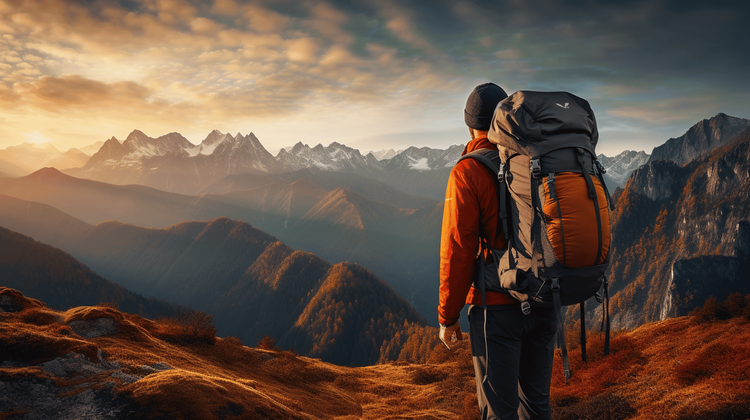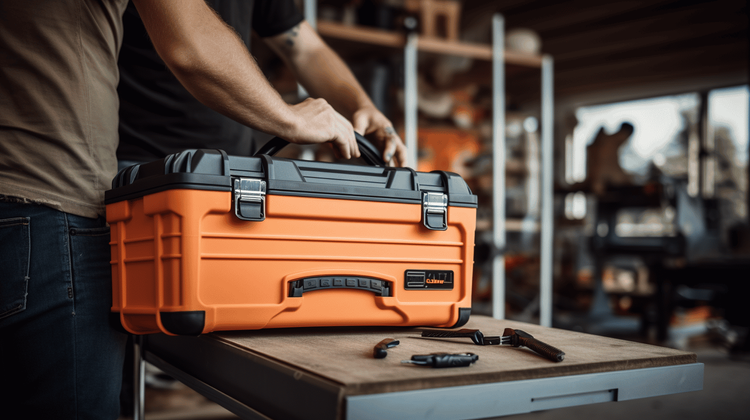Embarking on a Practical Exploration: What You Need to Know

Welcome, fellow adventurer! Have you ever felt the urge to step out of your comfort zone and explore the world around you? Imagine embarking on a journey filled with discovery, learning, and excitement. Practical exploration offers a unique opportunity to do just that. In this article, we will delve into the fascinating world of practical exploration and explore everything you need to know to get started.
Practical exploration is not just about visiting new places; it is a mindset that encourages curiosity, adaptability, and a willingness to seek out new experiences. Whether you are interested in nature, history, culture, or simply expanding your horizons, practical exploration can be a fulfilling and enriching experience. So, are you ready to embark on this journey with me?
Before we dive into the details, let's first understand why practical exploration is an important pursuit. Understanding the significance of this endeavor will help motivate and guide us as we venture forward.
Understanding the Importance of Practical Exploration
Definition of Practical Exploration
Practical exploration is the act of actively engaging in hands-on experiences to discover, investigate, and learn about the world around us. It involves stepping out of our comfort zones and immersing ourselves in real-life situations to gain firsthand knowledge and insights. Unlike traditional forms of learning that are often confined to classrooms, practical exploration allows us to apply theoretical concepts, test our skills, and unlock new discoveries.
Benefits of Practical Exploration
Practical exploration offers a multitude of benefits, both personal and professional. Here are a few key advantages:
- Enhanced Learning: Practical exploration provides a deeper understanding of concepts and theories by putting them into practice. It allows us to see the relevance and application of what we learn, which enhances comprehension and retention.
- Problem-Solving Skills: By actively engaging in practical exploration, we develop critical thinking and problem-solving skills. When faced with real-life challenges and obstacles, we learn to think on our feet, analyze situations, and come up with creative solutions.
- Personal Growth: Practical exploration pushes us to step out of our comfort zones and overcome fears and limitations. It fosters personal growth by building confidence, resilience, adaptability, and self-awareness.
- Real-World Experience: Practical exploration provides valuable real-world experience, which can be highly desirable in many fields. It allows us to gain practical skills, develop industry knowledge, and build a portfolio that showcases our capabilities.
Real-Life Applications
Practical exploration is not limited to a specific domain or field. Its applications are diverse and can be tailored to different areas of interest. Here are a few examples of how practical exploration can be applied:
- Science and Research: Practical exploration plays a vital role in scientific research. Scientists conduct experiments, collect data, and analyze observations to further our understanding of the natural world.
- Outdoor Adventures: For nature enthusiasts and adventure seekers, practical exploration offers the chance to explore various landscapes, engage in activities like hiking, camping, and rock climbing, and learn about different ecosystems.
- Culinary Arts: Chefs and food enthusiasts can embark on practical exploration by experimenting with new ingredients, techniques, and recipes. This allows them to expand their culinary knowledge and create unique dishes.
- Historical Preservation: Practical exploration can be used to investigate historical sites, uncover artifacts, and contribute to the preservation of cultural heritage. It helps in understanding the past and its implications on the present.
Practical exploration has countless applications and can be adapted to any area of interest. It encourages curiosity, hands-on learning, and a deeper connection with the world around us. So, whether you want to expand your knowledge, develop new skills, or simply satisfy your wanderlust, practical exploration is a valuable and fulfilling endeavor.
Preparing for Practical Exploration
Embarking on a practical exploration can be an exciting and enriching experience. However, it requires careful planning and preparation to ensure a successful and fulfilling journey. Whether you're venturing into the wilderness or exploring urban environments, here are some essential steps to help you get ready for your practical exploration:
Setting Clear Goals and Objectives
Before you begin your practical exploration, it's important to define your goals and objectives. Ask yourself what you hope to achieve and what you want to learn from the experience. Are you looking to discover new hiking trails, observe wildlife, or explore a historical site? Setting clear goals will not only guide your exploration but also provide a sense of direction and purpose.
Researching and Gathering Information
Knowledge is key when preparing for practical exploration. Take the time to research the location you will be exploring. Learn about its geography, climate, wildlife, and any potential risks or challenges you may encounter. Gathering information from reliable sources, such as guidebooks, online forums, or local experts, will help you make informed decisions and ensure your safety during the exploration.
Creating a Practical Exploration Plan
A well-thought-out plan is crucial to the success of your practical exploration. Consider the following when creating your plan:
- Timeline: Determine how long you will be engaging in practical exploration and allocate enough time for each activity.
- Route or itinerary: Identify specific areas or points of interest you want to explore and plan your route accordingly.
- Equipment and supplies: Make a checklist of the equipment and supplies you will need, such as hiking boots, a backpack, water, food, first-aid kit, and appropriate clothing for the weather conditions.
- Permissions and permits: If applicable, check if you need any permissions or permits to access certain areas or engage in particular activities.
- Contingency plans: Anticipate unforeseen circumstances like changes in weather or unexpected obstacles and have backup plans in place to ensure your safety and well-being.
By creating a detailed plan, you'll be better equipped to make the most of your practical exploration and minimize any potential risks or setbacks along the way.
Remember, flexibility is key during practical exploration. Your plan should be adaptable to changing circumstances and flexible enough to allow for unexpected discoveries and opportunities. Stay open-minded and embrace the spontaneity of the experience.
So, get ready to embark on your practical exploration by setting clear goals, conducting thorough research, and creating a well-structured plan. With these preparations in place, you'll be ready to embark on an adventure filled with discovery, learning, and personal growth. Get out there and explore the world around you!
Tools and Resources for Practical Exploration
When embarking on a practical exploration, it's essential to equip yourself with the right tools and resources. These not only enhance your experience but also ensure your safety and success in navigating and documenting your journey. Here are some fundamental tools and resources you should consider:
Equipment and Gear
Having the right equipment and gear is crucial for practical exploration. Make sure to gather the following essentials:
- Backpack: A sturdy backpack with multiple compartments will help you carry your gear comfortably.
- Appropriate Clothing: Dress according to the weather conditions and the type of terrain you will be exploring. Layering your clothing is often a good idea.
- Footwear: Invest in a pair of comfortable and durable boots or shoes that provide support and traction.
- Protection from the Elements: Consider carrying items like a hat, sunglasses, sunscreen, and insect repellent, depending on the environment you'll be exploring.
- First Aid Kit: Prepare a basic first aid kit with band-aids, antiseptic ointment, pain relievers, and any medication you may require.
Navigation and Mapping Tools
To ensure you don't get lost during your practical exploration, use navigation and mapping tools such as:
- Compass: A compass is a vital tool for orienting yourself and finding your bearing, especially when there are no reliable landmarks.
- GPS Device: Invest in a handheld GPS device or use a GPS-enabled smartphone application to track your location and navigate accurately.
- Topographic Maps: Topographic maps provide detailed information about the terrain, elevation, and landmarks. Study the maps beforehand and bring them with you during your exploration.
Safety Precautions
Safety is of utmost importance when engaging in practical exploration. Prioritize these safety precautions:
- Water and Food: Carry an adequate supply of water and energy-rich snacks or meals to keep yourself hydrated and energized.
- Tools for Fire Starting: In case of emergencies, carry tools such as matches, lighters, or fire starters to help you start a fire for warmth or cooking.
- Emergency Shelter: Pack a lightweight emergency shelter like a tent or bivvy bag in case you need to stay overnight unexpectedly.
- Personal Locator Beacon (PLB): Consider carrying a PLB, a small device that can send distress signals and facilitate rescue operations during emergencies.
Remember, these tools and resources may vary depending on the type of practical exploration you intend to undertake. Always assess the specific requirements for your journey and adjust accordingly.
"Practical exploration is all about being prepared and equipped. The right tools and resources can make all the difference in ensuring a safe and successful adventure."
Choosing the Right Locations for Practical Exploration
When it comes to practical exploration, choosing the right locations can make a world of difference in your experience. Whether you're exploring the great outdoors or urban environments, finding the perfect place to embark on your adventure is essential. Here are some factors to consider when selecting your exploration destinations:
Natural Environments
- National Parks: National parks offer stunning natural landscapes and diverse ecosystems. They provide opportunities for hiking, wildlife observation, and learning about the environment.
- Mountains and Forests: If you're a fan of hiking or camping, mountains and forests provide endless possibilities. These areas offer breathtaking views, serene surroundings, and the chance to reconnect with nature.
- Coastlines and Beaches: If you're a water enthusiast, coastal areas and beaches are ideal for exploration. You can engage in activities such as swimming, snorkeling, surfing, and beachcombing.
Urban Exploration
- City Centers: The heart of any city is worth exploring. City centers are often filled with historical landmarks, cultural attractions, bustling markets, and vibrant street art. They offer a glimpse into the unique identity of a place.
- Architecture and Infrastructure: If you have an interest in architecture, urban exploration allows you to marvel at impressive buildings, bridges, and other structures. You can learn about the history and significance of these landmarks.
- Local Neighborhoods: Exploring local neighborhoods gives you an authentic experience of a city. You can visit local markets, interact with residents, try regional cuisine, and discover hidden gems that are off the beaten path.
Historical and Cultural Sites
- Museums and Art Galleries: Museums and art galleries are treasure troves of knowledge and creativity. They house historical artifacts, artistic masterpieces, and exhibitions that provide insights into different cultures and time periods.
- Ancient Ruins: Exploring ancient ruins allows you to step back in time and witness the remnants of past civilizations. You can explore archaeological sites, learn about ancient cultures, and imagine life in the distant past.
- Historical Landmarks: Historical landmarks, such as castles, forts, and monuments, are not only visually captivating but also hold significant historical and cultural importance. They tell stories of the past and offer glimpses into the heritage of a place.
When choosing locations for practical exploration, it's important to consider your interests and preferences. Think about what you enjoy and what you want to learn or experience during your exploration. Remember, the world is full of diverse and fascinating places waiting to be discovered. So, get out there, explore, and let your curiosity lead the way!
Skills and Techniques for Successful Practical Exploration
When embarking on a practical exploration, it is essential to have the right skills and techniques to navigate and make the most out of your experience. These skills will not only ensure your safety but also enhance your ability to explore effectively. Here are some key skills and techniques to cultivate for successful practical exploration:
Orientation and Navigation Skills
- Map Reading: Familiarize yourself with topographic maps, compasses, and GPS devices. Being able to read a map and understand terrain features will help you navigate and find your way in unfamiliar environments.
- Compass and GPS Usage: Learn how to use a compass to determine your direction and navigate without relying solely on technology. GPS devices can be helpful, but it's crucial to have a backup navigation method in case of equipment failure or low battery.
- Wayfinding: Develop the ability to navigate using natural landmarks, such as the position of the sun, stars, or the flow of water. These skills will come in handy when you don't have access to maps or navigation tools.
Observation and Recording Techniques
- Attention to Detail: Train yourself to be observant and pay attention to your surroundings. Notice changes in vegetation, animal behavior, or any other relevant details that may provide insights during your exploration.
- Note-taking: Carry a notebook and pen with you to jot down important details, observations, and any ideas or questions that arise during your exploration. Taking notes will help you remember key information and reflections.
- Photography and Videography: Capture the essence of your practical exploration through photographs and videos. Documenting your experience visually allows you to share the beauty and significance of your findings with others.
Problem-Solving and Adaptability
- Critical Thinking: Develop your problem-solving skills by analyzing situations, identifying obstacles, and finding creative solutions. Think outside the box when faced with challenges during your exploration.
- Adaptability: Be prepared to adjust your plans and adapt to unexpected circumstances. Weather conditions, trail closures, or other unforeseen obstacles may require you to change your route or modify your goals.
- First Aid Skills: Acquire basic first aid skills to handle minor injuries or medical emergencies that may occur during your exploration. Knowing how to apply first aid can make a significant difference in maintaining your safety and the safety of others.
Remember, practical exploration is about embracing the unknown and stepping out of your comfort zone. These skills and techniques will not only make your exploration more fruitful but also enhance your overall experience. Cultivating these skills will empower you to make the most out of your practical exploration journeys.
"The real voyage of discovery consists not in seeking new landscapes, but in having new eyes." - Marcel Proust
Maintaining Safety during Practical Exploration
When it comes to practical exploration, safety should always be a top priority. Whether you're venturing into the wilderness, exploring urban areas, or visiting historical sites, taking precautions and being prepared can greatly minimize the risks involved. Here are some essential tips to help you maintain safety during your practical exploration adventures:
Risk Assessment and Management
- Conduct a thorough risk assessment before embarking on any practical exploration journey. Evaluate the potential hazards, such as weather conditions, terrain difficulty, wildlife encounters, and any specific risks associated with your chosen destination.
- Take appropriate measures to mitigate these risks. This may include packing necessary safety equipment, acquiring appropriate permits or permissions, and ensuring you have the knowledge and skills required for the type of exploration you plan to undertake.
Pro Tip: Always remember that practical exploration is about pushing boundaries and exploring new frontiers, but it should never compromise your safety or that of others. Never underestimate the risks involved and be prepared for unexpected situations.
Emergency Preparedness
- Prepare an emergency plan before your practical exploration adventure. This plan should outline the necessary steps to take in case of an emergency, such as medical emergencies, equipment failures, or getting lost.
- Carry essential emergency supplies, including a first aid kit, map and compass, extra food and water, and a communication device like a cell phone or satellite phone. Be familiar with how to use these items effectively.
Did You Know: It's always a good idea to inform a trusted person about your practical exploration plans, including your intended route, estimated time of return, and emergency contact information. This way, if something goes wrong, someone will know to initiate a search and rescue operation.
Communication and Safety Protocols
- Establish a communication plan with your fellow explorers or a designated contact person who can assist in case of emergencies.
- Determine a system of check-ins or periodic communication to keep others informed of your progress and ensure that assistance can be provided if needed.
- Familiarize yourself with local regulations or guidelines relating to practical exploration and adhere to them. This includes obtaining the necessary permits, respecting protected areas, and practicing Leave No Trace principles.
Remember: Safety is not just about the individual; it extends to the environment and other people. Always be respectful of the places you explore, leave them as you found them, and follow any guidelines or regulations in place to protect the area.
By following these safety tips, you can minimize the risks associated with practical exploration and have a more enjoyable and rewarding experience. Remember, being prepared, making informed decisions, and prioritizing safety will allow you to immerse yourself in the wonders of the world around you while staying safe. So, go out there, explore, and create unforgettable memories while keeping yourself and others protected!
Documenting and Sharing Practical Exploration Experiences
One of the most exciting aspects of practical exploration is the ability to document and share your experiences with others. Whether you want to capture breathtaking photos, create captivating videos, or simply keep a journal of your adventures, documenting your exploration journey allows you to relive those moments and share them with others who may be equally as fascinated by your discoveries. In this section, we will explore different ways you can document and share your practical exploration experiences.
Capturing Photos and Videos
- Photography: A picture is worth a thousand words, and capturing stunning photographs can truly immerse others in the beauty and wonder of your practical exploration experiences. Invest in a good quality camera or use your smartphone's camera to capture high-resolution images that showcase the landscapes, wildlife, and unique sights you encounter along the way.
- Videography: If a picture is worth a thousand words, imagine the story a well-shot video can tell! Consider taking videos during your practical exploration to document not only the sights but also the sounds and movements that make the experience come alive. It could be as simple as recording a short clip of a cascading waterfall or creating a vlog-style video to share the entire journey with your audience.
Keeping a Journal
- Written Reflection: Keeping a journal is an excellent way to reflect on your practical exploration experiences. Take the time to write down your thoughts, feelings, and observations throughout the journey. Include details such as the location, weather conditions, and any interesting encounters. This will not only help you remember specific moments but will also allow you to revisit your experiences in writing.
- Sketches and Drawings: If you have a knack for sketching or drawing, consider incorporating this into your journaling process. Capture the essence of the landscapes, wildlife, or cultural artifacts you come across through your artistic skills. Not only will this add a personal touch to your journal, but it will also serve as a visual representation of your exploration.
Sharing Experiences Responsibly
- Social Media: Social media platforms like Instagram, YouTube, or Facebook provide a fantastic opportunity to share your practical exploration experiences with a wide audience. Create accounts dedicated to your explorations and share your photos, videos, and stories. Use relevant hashtags to reach like-minded enthusiasts and engage with their content as well.
- Blogging: If you enjoy writing and want to provide a more in-depth account of your practical exploration experiences, consider starting a blog. Share your stories, tips, and recommendations with others who have an interest in the same type of exploration. This medium allows for more expansive storytelling and the ability to connect with fellow explorers on a deeper level.
"Documenting and sharing your practical exploration experiences is not only a way to preserve memories but also a means to inspire and educate others about the wonders of the world."
By sharing your experiences responsibly, you have the power to encourage others to embark on their own practical exploration journeys and foster a sense of curiosity and appreciation for nature, history, and culture.
Documenting and sharing your practical exploration experiences is a personal choice, and it's essential to find the medium that best aligns with your interests and skill set. Whether you prefer photography, videography, journaling, or a combination of these methods, remember to stay true to your unique perspective and share your experiences with passion and authenticity. So go out there, capture the beauty of the world, and inspire others to embark on their own practical exploration endeavors.
Benefits and Learning Opportunities of Practical Exploration
Practical exploration offers a wide range of benefits and learning opportunities for individuals of all ages. Whether you are an adventure seeker or someone looking to expand your horizons, engaging in practical exploration can be a transformative experience. Here are some of the key benefits and learning opportunities you can gain from practical exploration:
Personal Growth and Self-Discovery
- Practical exploration allows you to step out of your comfort zone and push your limits. It encourages personal growth and self-discovery by exposing you to new challenges and experiences.
- Exploring new environments and pushing yourself physically and mentally can boost your confidence and self-esteem.
- It helps you develop resilience, adaptability, and problem-solving skills as you navigate unfamiliar territories and overcome obstacles.
- Practical exploration fosters a sense of independence and self-reliance, as you learn to trust your instincts and make decisions on your own.
Environmental and Cultural Awareness
- By engaging in practical exploration, you develop a deeper appreciation for the natural world and the importance of environmental stewardship.
- Through interactions with different environments, such as forests, mountains, or oceans, you gain a better understanding of the delicate balance of ecosystems.
- Practical exploration also exposes you to different cultures and ways of life, promoting tolerance, empathy, and cultural awareness.
- It allows you to learn about the history, traditions, and customs of different communities, fostering a sense of global citizenship.
Acquiring Practical Skills
- Practical exploration provides an opportunity to acquire practical skills that can be useful in various aspects of life.
- Navigation and orientation skills are essential in practical exploration, and mastering them can improve your spatial awareness and ability to navigate unfamiliar surroundings.
- Observation and recording techniques, such as wildlife tracking or documenting cultural practices, help you develop keen observation skills and attention to detail.
- Problem-solving and adaptability are honed as you encounter unexpected situations and find creative solutions.
- Practical exploration also nurtures physical fitness, endurance, and outdoor survival skills.
In conclusion, practical exploration offers a multitude of benefits and learning opportunities. It is not just about the thrill of adventure, but also about personal growth, expanding your horizons, and developing practical skills. By engaging in practical exploration, you can gain a deeper understanding of both the natural world and diverse cultures, as well as discover your own strengths and abilities. So, grab your gear, venture into the unknown, and let the transformative power of practical exploration enrich your life.
Conclusion
In conclusion, embarking on a practical exploration journey can be a transformative and enlightening experience. Whether you are seeking personal growth, environmental awareness, or practical skills, practical exploration offers endless learning opportunities.
By understanding the importance of practical exploration and preparing adequately, you can ensure a successful and enjoyable experience. With the right tools, resources, and skills, you will be able to navigate through various environments, document your experiences, and stay safe throughout your journey.
Remember, practical exploration is not just about visiting new places, but also about developing an appreciation for nature, history, culture, and yourself. So get out there, explore, and unlock the wonders of the world!
As an explorer, you have the power to expand your horizons, challenge yourself, and make lasting memories. So go ahead and embark on a practical exploration journey - discover the world, discover yourself, and embrace the adventure that awaits!
Frequently Asked Questions
- What is the purpose of embarking on a practical exploration?The purpose of embarking on a practical exploration is to gain hands-on experience and knowledge by actively engaging in a specific subject or field. It allows individuals to apply theoretical concepts, test hypotheses, and develop practical skills.
- What are the benefits of a practical exploration?Some of the benefits of a practical exploration include acquiring practical skills, deepening understanding of a subject, fostering creativity and critical thinking, building problem-solving abilities, and gaining valuable real-world experiences.
- How do you choose a practical exploration topic?When selecting a practical exploration topic, consider your interests, passions, and career goals. Choose a topic that aligns with your objectives, offers opportunities for hands-on learning, and allows for practical application.
- What are some examples of practical exploration?Examples of practical explorations can include conducting scientific experiments, participating in field research, implementing a new business strategy, creating artwork or design projects, developing software applications, or engaging in hands-on training programs.
- How can practical explorations enhance personal and professional development?Practical explorations can enhance personal and professional development by fostering problem-solving skills, improving decision-making abilities, fostering creativity and innovation, building self-confidence, and providing real-world experience that is attractive to employers.




